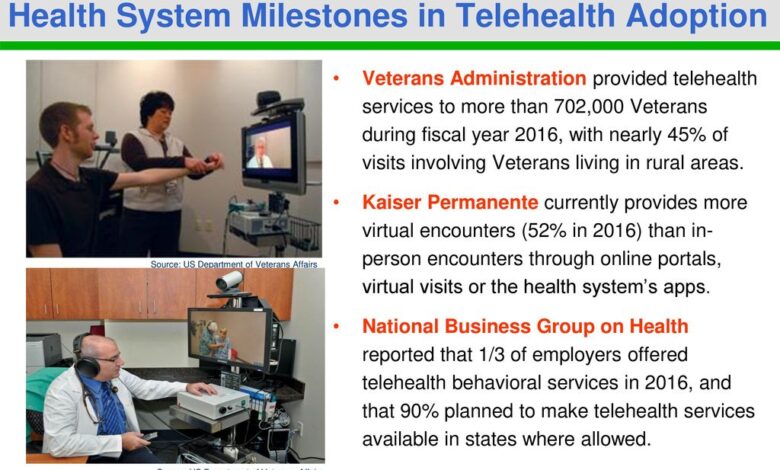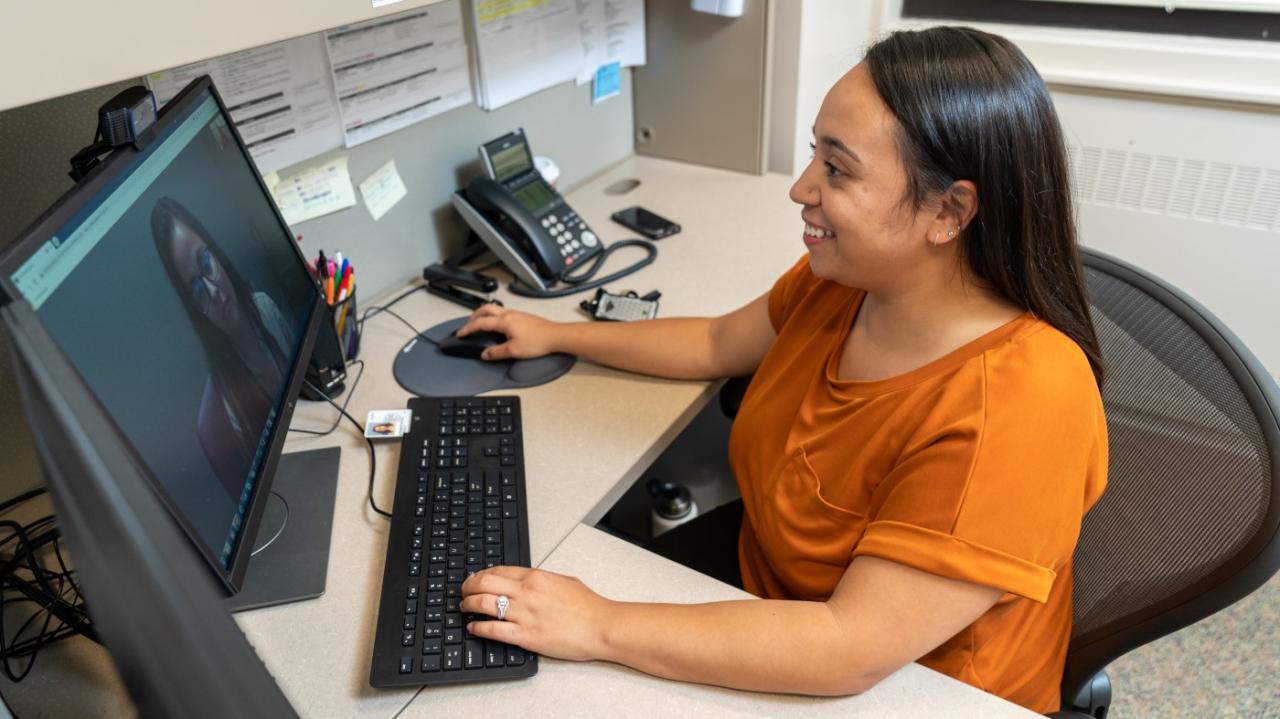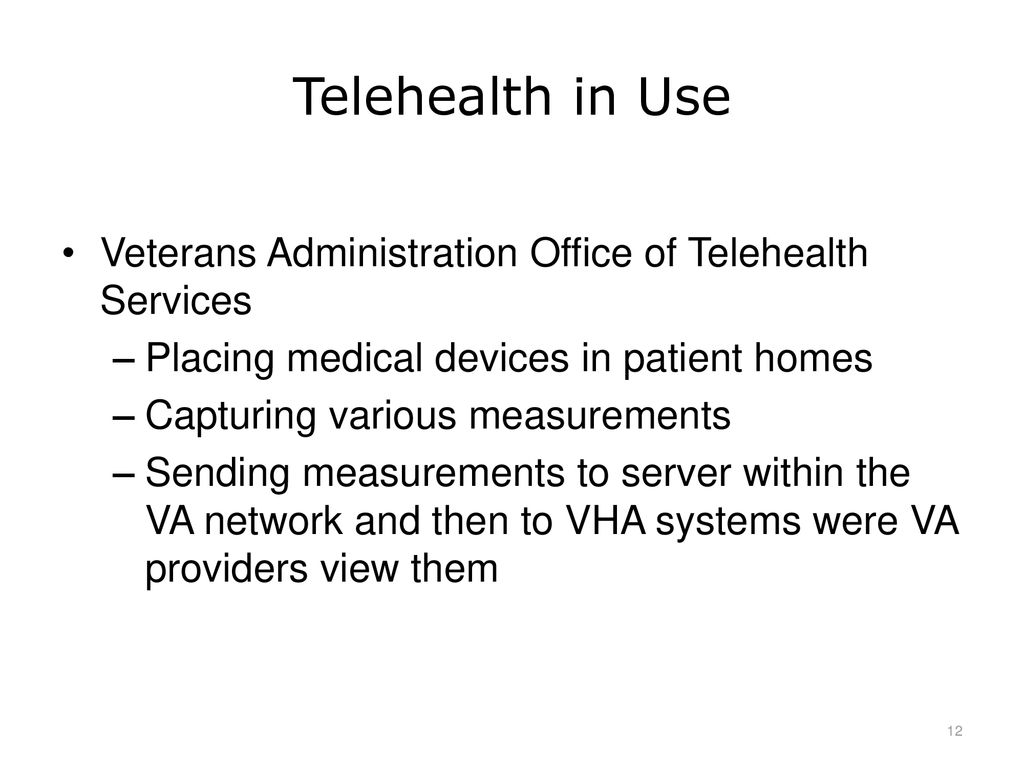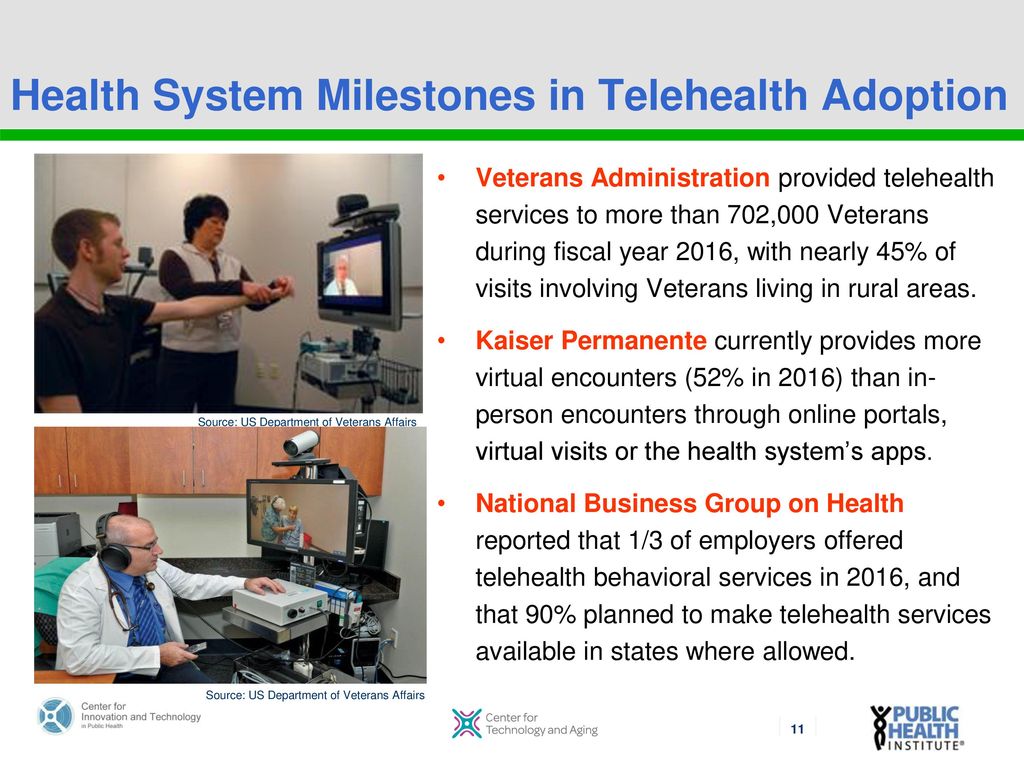
Transforming Veteran Healthcare Telehealths Revolution
Transforming veteran healthcare how telehealth is changing the game – Transforming veteran healthcare: how telehealth is changing the game. For too long, our veterans – the brave men and women who’ve served our country – have faced significant hurdles in accessing the quality healthcare they deserve. Geographical limitations, long wait times, and the sheer complexity of the traditional system have created frustrating and sometimes insurmountable barriers. But a digital revolution is underway, and telehealth is leading the charge, offering a lifeline of hope and improved access to care for veterans across the nation.
This isn’t just about convenience; it’s about ensuring our heroes receive the timely, effective treatment they’ve earned.
This post dives deep into how telehealth is reshaping veteran healthcare, exploring its impact on accessibility, specific applications in various areas of care, and the challenges we still need to overcome to make this vital technology truly equitable for all veterans. We’ll look at real-world examples of successful programs, discuss the future of telehealth in veteran care, and address common concerns surrounding data privacy and technological access.
The Current State of Veteran Healthcare: Transforming Veteran Healthcare How Telehealth Is Changing The Game

Source: va.gov
Access to quality healthcare remains a significant challenge for many veterans, despite the existence of the Department of Veterans Affairs (VA) healthcare system. While the VA strives to provide comprehensive care, systemic issues and individual circumstances create barriers that prevent timely and effective treatment for a substantial portion of the veteran population. These challenges impact not only veterans’ physical and mental well-being but also their overall quality of life and successful reintegration into civilian society.The limitations of the traditional veteran healthcare system are multifaceted.
Long wait times for appointments, particularly for specialized care, are a persistent complaint. This delay can exacerbate existing conditions and lead to further health complications. Furthermore, the bureaucratic complexity of the VA system can be overwhelming for veterans navigating the process, especially those with disabilities or cognitive impairments. Shortages of healthcare professionals, particularly in rural areas and for specific specialties, further constrain the system’s capacity to meet the diverse needs of the veteran population.
Finally, inadequate funding and resource allocation often result in compromised quality of care and limited access to cutting-edge treatments.
Telehealth is revolutionizing veteran healthcare access, offering remote consultations and monitoring that overcome geographical barriers. The news that Steward Health Care secured financing to emerge from bankruptcy, as reported in this article , highlights the financial pressures on healthcare systems. This underscores the importance of innovative, cost-effective solutions like telehealth for improving veteran care and managing resources efficiently.
Geographical Barriers Impacting Veteran Healthcare Access
Geographic location significantly impacts a veteran’s ability to access VA healthcare services. Many veterans reside in rural areas with limited access to VA facilities or private healthcare providers who accept VA insurance. The distances involved in traveling to appointments can be substantial, creating financial burdens through transportation costs and lost wages, and posing further challenges for veterans with mobility limitations.
For example, a veteran living in a remote rural area in Montana might face a several-hour drive to the nearest VA medical center, making routine check-ups or emergency care exceedingly difficult. This geographical disparity disproportionately affects veterans in rural states and those living in underserved communities.
Healthcare Disparities Among Veteran Demographics
Significant healthcare disparities exist among various veteran demographics. Veterans of color, particularly those from minority ethnic groups, often face systemic barriers to accessing quality healthcare, experiencing longer wait times, and receiving less comprehensive care compared to their white counterparts. This disparity is often linked to factors such as implicit bias in the healthcare system, cultural differences impacting communication and trust, and socioeconomic factors that limit access to transportation and resources.
Furthermore, female veterans often experience unique challenges, including inadequate access to specialized women’s health services, such as reproductive care and treatment for gender-specific conditions. Finally, veterans experiencing homelessness or those with substance use disorders often face additional hurdles in accessing and maintaining consistent healthcare, resulting in poorer health outcomes. These disparities highlight the urgent need for targeted interventions and systemic reforms to ensure equitable access to healthcare for all veterans, regardless of race, gender, socioeconomic status, or other demographic factors.
Telehealth’s Impact on Accessibility
Telehealth has revolutionized veteran healthcare access, particularly for those residing in rural or underserved areas. Its ability to bridge geographical barriers and overcome logistical challenges is significantly improving the quality and timeliness of care received by veterans across the nation. This impact is multifaceted, encompassing improved access to specialists, reduced wait times, and enhanced cost-effectiveness.
Improved Access to Specialists for Veterans in Remote Areas
For veterans living far from major medical centers, accessing specialized care often presents significant hurdles. Travel expenses, time constraints, and the lack of readily available specialists in their local communities can create significant barriers to receiving timely and appropriate medical attention. Telehealth eliminates many of these obstacles. Through video conferencing and other remote technologies, veterans can consult with specialists located hundreds or even thousands of miles away, receiving the expert care they need without the need for extensive travel.
This is particularly beneficial for veterans with mobility issues, chronic conditions, or those caring for family members. The convenience and accessibility offered by telehealth are transforming the landscape of specialized care for rural and remote veteran populations.
Reduced Wait Times for Appointments
Another significant advantage of telehealth is its ability to reduce wait times for appointments. Traditional in-person healthcare often involves scheduling delays, lengthy waiting rooms, and bureaucratic hurdles. Telehealth streamlines the appointment process, offering more readily available appointment slots and reducing the overall time veterans spend accessing care. This is particularly crucial for veterans requiring urgent or ongoing care, where prompt access to healthcare professionals can significantly impact treatment outcomes and overall well-being.
The efficiency of telehealth reduces administrative overhead and allows healthcare providers to see more patients in a given timeframe, directly contributing to shorter wait times.
Cost-Effectiveness of Telehealth Versus Traditional In-Person Visits
While the initial investment in telehealth infrastructure may seem substantial, studies have consistently shown that telehealth can be more cost-effective in the long run compared to traditional in-person visits. Reduced travel costs for veterans, decreased time off work, and minimized expenses associated with transportation and lodging contribute to significant savings. Moreover, telehealth can improve efficiency for healthcare providers, optimizing their time and resources.
Although the cost of equipment and training is an initial investment, the long-term cost savings associated with reduced hospital readmissions, fewer emergency room visits, and improved overall health management often outweigh the initial expenditure. The long-term benefits of telehealth on the healthcare system and the individual veteran are substantial.
Examples of Successful Telehealth Implementations in Veteran Healthcare
Several successful telehealth programs have been implemented to improve veteran healthcare access and quality. The following table showcases some notable examples:
| Program Name | Location | Services Offered | Success Metrics |
|---|---|---|---|
| VA Video Connect | Nationwide | Primary care, mental health, telehealth specialty consultations | Increased access to care for rural veterans, reduced wait times, improved patient satisfaction |
| VA Telehealth Home-Based Primary Care | Nationwide | Chronic disease management, medication management, home visits with telehealth integration | Reduced hospitalizations, improved patient outcomes, increased patient engagement |
| VA PTSD Telehealth Program | Nationwide | Cognitive processing therapy, prolonged exposure therapy, other evidence-based PTSD treatments | Improved PTSD symptoms, increased treatment adherence, reduced healthcare utilization |
| VA Connected Care | Nationwide | Remote patient monitoring, virtual check-ins, secure messaging | Improved patient self-management, reduced hospital readmissions, enhanced communication with providers |
Specific Applications of Telehealth in Veteran Care
Telehealth has revolutionized veteran healthcare, offering convenient and accessible solutions to address a wide range of needs. By leveraging technology, telehealth bridges geographical barriers, reduces travel burdens, and improves the overall quality of care for veterans, particularly those in rural areas or with mobility limitations. This section will explore some key applications of telehealth in enhancing veteran well-being.
Mental Health Support for Veterans
Telehealth plays a crucial role in providing timely and convenient mental healthcare services to veterans, many of whom struggle with PTSD, depression, and anxiety. Virtual therapy sessions, conducted via video conferencing or secure messaging platforms, allow veterans to access mental health professionals from the comfort of their homes. This eliminates the stigma often associated with seeking in-person mental health care and increases accessibility for veterans in remote locations or with transportation challenges.
Telehealth is revolutionizing veteran healthcare access, offering remote consultations and monitoring that’s incredibly convenient. This improved access extends beyond veterans; consider the challenges faced by families managing conditions like Tourette Syndrome – finding specialized care can be a huge hurdle. Learning about effective management strategies, like those outlined in this helpful article on strategies to manage Tourette syndrome in children , highlights the power of readily available information.
Ultimately, increased access to both information and healthcare, facilitated by telehealth, is a game-changer for everyone.
The convenience of telehealth appointments can significantly improve treatment adherence and engagement, leading to better mental health outcomes. For example, a veteran living in a rural area with limited access to mental health specialists can now participate in regular therapy sessions through video conferencing, improving their access to care and potentially preventing relapse.
Chronic Disease Management in Veterans
Telehealth is invaluable in managing chronic conditions common among veterans, such as diabetes, heart disease, and hypertension. Remote patient monitoring (RPM) devices, such as blood glucose meters, blood pressure monitors, and wearable activity trackers, allow healthcare providers to continuously monitor a veteran’s health status. This data is transmitted securely to the provider, enabling timely interventions and adjustments to treatment plans.
For instance, if a veteran’s blood sugar levels consistently fall outside the target range, their healthcare provider can remotely adjust their medication or offer dietary guidance. This proactive approach minimizes the risk of complications and improves overall health management. Telehealth also facilitates regular virtual check-ups with specialists, reducing the need for frequent in-person visits.
Medication Management and Adherence
Medication adherence is crucial for managing both acute and chronic conditions. Telehealth tools can significantly improve medication adherence among veterans. Secure messaging platforms allow veterans to directly communicate with pharmacists and healthcare providers to ask questions about their medications, address side effects, and receive reminders to take their medication. Some telehealth platforms also incorporate features that track medication intake and provide personalized reminders, improving overall compliance.
This aspect of telehealth is particularly beneficial for veterans who may struggle with remembering to take their medications or have complex medication regimens. The direct communication channel fostered by telehealth improves understanding and reduces medication-related errors.
Rehabilitation and Physical Therapy for Veterans
Telehealth facilitates access to rehabilitation and physical therapy services, critical for veterans recovering from injuries or managing chronic pain. Virtual physical therapy sessions, using video conferencing, allow therapists to guide veterans through exercises and monitor their progress remotely.
Telehealth-enabled rehabilitation tools include:
- Wearable sensors: These track movement and provide real-time feedback on exercise performance.
- Interactive exercise programs: These offer personalized exercises and progress tracking.
- Virtual reality (VR) therapy: This immersive technology helps veterans regain motor skills and function in a safe and engaging environment.
- Remote monitoring devices: These track vital signs and activity levels, providing valuable data for therapists.
These tools empower veterans to participate in rehabilitation from the comfort of their homes, enhancing their recovery process and reducing the need for extensive travel to physical therapy clinics. For example, a veteran with a knee injury can use a wearable sensor to monitor their range of motion during home exercises, allowing their physical therapist to remotely assess their progress and adjust their treatment plan accordingly.
Addressing Challenges and Limitations of Telehealth for Veterans
Telehealth offers incredible potential for improving veteran healthcare, but its widespread adoption faces significant hurdles. Successfully integrating telehealth requires addressing several key challenges related to access, security, equity, and patient engagement. Overcoming these obstacles is crucial to realizing telehealth’s full potential for this vulnerable population.
Technology Access and Digital Literacy
Many veterans, particularly older veterans or those from rural areas, may lack reliable internet access or the necessary technological skills to utilize telehealth effectively. This digital divide creates a significant barrier to accessing care. For example, a veteran living in a remote area with limited broadband access might struggle to participate in a video appointment, even if they possess the necessary devices.
Telehealth is revolutionizing veteran healthcare, offering convenient access to specialists and reducing travel burdens. This improved access is crucial, especially when considering conditions like dementia, which often require early detection. A fascinating study explores whether a simple eye test could help predict dementia risk in older adults, as detailed in this article: can eye test detect dementia risk in older adults.
Early diagnosis, facilitated by telehealth’s reach, could significantly improve veteran care and quality of life.
Similarly, a veteran unfamiliar with using video conferencing software may find the technology daunting and frustrating, potentially leading to disengagement from telehealth services. Addressing this requires targeted initiatives to improve internet infrastructure in underserved areas and provide digital literacy training tailored to veterans’ needs. This might involve partnering with community organizations to offer hands-on training sessions or providing veterans with subsidized internet access.
Data Privacy and Security Concerns
The sensitive nature of medical information necessitates robust data privacy and security measures in telehealth. Veterans are understandably concerned about the potential for data breaches or unauthorized access to their personal health information. Instances of large-scale healthcare data breaches highlight the very real risks involved. Therefore, implementing strong encryption protocols, adhering to strict data governance policies, and providing transparent communication about data handling practices are essential to build trust and encourage wider adoption of telehealth services.
Regular security audits and employee training programs are crucial to maintaining the confidentiality of veteran health data.
Ensuring Equitable Access to Telehealth
Equitable access to telehealth requires addressing disparities in socioeconomic status and geographic location. Veterans with limited financial resources may struggle to afford the necessary devices or internet access, while those in rural areas may lack adequate broadband coverage. To ensure equity, government initiatives might consider providing subsidies for technology and internet access to low-income veterans. Furthermore, expanding telehealth services to include alternative communication methods, such as telephone consultations, can improve accessibility for those without internet access or technological proficiency.
Collaborating with community health centers and veterans’ organizations can help identify and address specific barriers faced by underserved populations.
Improving Patient Engagement and Adherence, Transforming veteran healthcare how telehealth is changing the game
Successful telehealth implementation depends on active patient engagement and adherence to treatment plans. Factors such as lack of motivation, confusion about the technology, or difficulty scheduling appointments can lead to poor adherence. Strategies to improve engagement include personalized communication, proactive outreach from healthcare providers, and user-friendly telehealth platforms with intuitive interfaces. Regular check-ins, reminders, and educational materials can help patients stay on track.
Furthermore, incorporating patient feedback into the design and implementation of telehealth programs is crucial to address any specific challenges or concerns that may arise. For example, providing multilingual support and culturally sensitive care can significantly improve engagement among diverse veteran populations.
The Future of Telehealth in Veteran Healthcare

Source: slideplayer.com
Telehealth has revolutionized veteran healthcare access and delivery, but its potential is far from exhausted. The coming years promise even greater integration of technology and innovative approaches to care, leading to improved outcomes and a more equitable system for all veterans. This section explores the exciting possibilities ahead.
Expanding Telehealth Services to Underserved Veteran Populations
A key priority is ensuring equitable access to telehealth for all veterans, regardless of location, socioeconomic status, or technological literacy. This requires a multi-pronged strategy. First, expanding broadband access in rural and underserved areas is crucial. Government initiatives, in conjunction with private sector partnerships, can accelerate infrastructure development. Second, providing veterans with the necessary devices and training to use telehealth platforms is essential.
This might involve subsidized device purchases, personalized training programs, and ongoing technical support. Third, culturally competent telehealth services must be developed to address the diverse needs of veteran populations. This includes multilingual support, culturally sensitive communication styles, and consideration of specific health disparities within different veteran communities. For example, outreach programs focusing on veterans in Native American reservations or those experiencing homelessness could utilize mobile telehealth units equipped with interpreters and culturally appropriate materials.
The Role of AI and Other Technologies in Veteran Telehealth
Artificial intelligence (AI) holds immense promise for enhancing telehealth for veterans. AI-powered diagnostic tools can assist in early detection of conditions like PTSD or chronic pain, improving treatment outcomes. AI chatbots can provide 24/7 access to basic health information and mental health support, reducing wait times and improving patient engagement. Wearable sensors can monitor vital signs remotely, alerting healthcare providers to potential issues before they become emergencies.
For instance, an AI-powered system could analyze data from a veteran’s smartwatch to identify early signs of a cardiac event, allowing for timely intervention. The integration of virtual reality (VR) and augmented reality (AR) technologies can also create immersive therapeutic experiences for veterans struggling with PTSD or other mental health challenges. This could include VR-based exposure therapy or AR-guided physical therapy.
Improving Veteran Healthcare Outcomes Through Telehealth
Telehealth has the potential to significantly improve veteran healthcare outcomes across various domains. Increased access to care leads to earlier diagnosis and treatment, reducing the severity of conditions and preventing complications. Remote monitoring capabilities allow for proactive intervention, preventing hospital readmissions and improving overall health management. Furthermore, telehealth can enhance patient engagement and satisfaction, leading to improved adherence to treatment plans and better self-management of chronic conditions.
For example, a study might show a significant reduction in hospital readmissions for heart failure patients who utilize remote monitoring via telehealth compared to those receiving traditional care. Similarly, data could demonstrate improved medication adherence and mental health symptom management among veterans participating in telehealth-delivered therapy programs.
Projected Growth of Telehealth in Veteran Care (Visual Representation)
Imagine a graph charting the growth of telehealth in veteran care over the next 5-10 years. The x-axis represents time (years), and the y-axis represents various metrics: telehealth usage (number of virtual visits), service expansion (number of telehealth services offered), and technological advancements (number of new AI-powered tools implemented). The graph would show a steep upward curve, illustrating exponential growth in all three metrics.
Specifically, we’d see a dramatic increase in the number of virtual visits, a significant expansion of telehealth services to include more specialized areas like mental health and chronic disease management, and a rapid adoption of AI-powered diagnostic tools and remote monitoring technologies. The graph would visually represent the transformation from a nascent technology to a cornerstone of veteran healthcare delivery.
For example, if we started with 1 million telehealth visits in 2023, we could project 5 million visits by 2028 and 15 million by 2033. Similarly, the number of telehealth services offered might grow from 10 to 50, reflecting a diversification of care options.
Outcome Summary

Source: slideplayer.com
The integration of telehealth into veteran healthcare is not just a trend; it’s a fundamental shift towards a more accessible, efficient, and ultimately, more compassionate system. While challenges remain – particularly in ensuring equitable access for all veterans – the potential for improved outcomes is undeniable. From reducing wait times and improving mental health support to facilitating chronic disease management and remote rehabilitation, telehealth is proving to be a game-changer.
The future promises even more innovative applications, driven by advancements in AI and other technologies. Let’s continue to champion this vital evolution, ensuring that every veteran receives the care they deserve, regardless of their location or circumstances.
Common Queries
What if a veteran doesn’t have reliable internet access?
Many telehealth programs are working to address this by providing internet access assistance or utilizing alternative methods like phone-based consultations where appropriate.
Is my medical information safe with telehealth?
Reputable telehealth platforms prioritize data security and privacy, adhering to strict regulations like HIPAA. Always check the provider’s security measures.
How do I find telehealth services for veterans?
Contact your local VA healthcare system. They can guide you towards available telehealth options and resources.
Can telehealth replace all in-person visits?
No, telehealth is a valuable supplement to, not a replacement for, all in-person care. It’s most effective for certain types of appointments and monitoring.





